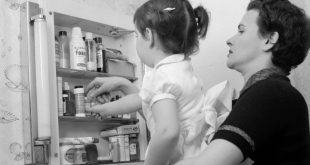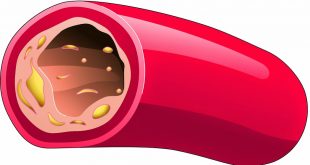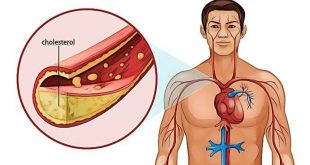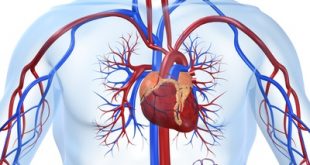Introduction
- Hypertension risk increases with age.
- Elderly may have other medical conditions that may affect the choices of antihypertensive medications.
- Elderly are a heterogeneous group of people: the robust elderly and the frail elderly.
- Frail elderly are more prone to side effects of blood pressure medications.
- Treatment considerations specifically for specific group of elderly will be discussed here.
Treatment Consideration
- Management of hypertension using only 1 group of medication (monotherapy) is clearly inadequate for controlling blood pressure and preventing cardiovascular disease in most elderly.
- Combinations of antihypertensive drugs are required by most and fixed dose combinations are increasingly available and utilized. Fix dose combinations are useful in elderly because of their multiple medication requirements and adherence issues.
- Elderly with cognitive or visual impairment should have the treatment regime simplified to ease the adherence to medications. Pill box may help the person to remember taking the correct pill on the correct time. In elderly with more severe impairment, supervision from a caregiver may be needed.
- To ensure optimal treatment for hypertension, emphasis should also be given into emotional and social aspect of the elderly. A depressed person will not be bothered about adhering to antihypertensive management.
- Ensuring that the elderly is able to attend clinic visits logistically (examples like transportation) is important as well and mobility of the elderly may be limited compare to the young.
Treatment With Medications (Single And In Combinations)
1. Diuretics
Diuretics as a group of medications, work primarily by helping the body to excrete excess salt in the body. There are few types of medications under this group. Thiazide-type diuretics are considered the cornerstone of antihypertensive therapy because of their extensive track record in preventing stroke and cardiovascular events and their low cost. However, their long term usage has been associated with adverse metabolic effects on body sugar and lipid. Although “low-dose” thiazide-type diuretics are generally recommended for blood pressure treatment, the efficacy of thiazide has only been shown in research at doses equivalent to ? 25 mg hydrochlorothiazide. We do not really know how effective it is with “low-dose” thiazide diuretics which equals to ? 12.5 mg hydrochlorothiazide. Furthermore, chlortalidone at 20mg dose (equivalent to 40 mg hydrochlorothiazide), another type of thiazide diuretics has been shown to be effective and safe antihypertensive in most major trials. On the basis of outcome researches and the observation that chlorthalidone is more effective than hydrochlorothiazide in lowering blood pressure, chlorthalidone deserves consideration in the treatment of hypertension in elderly.
The potential problem with moderate-dose of diuretic therapy is the increase risk of causing potassium abnormality, insulin resistance, and type 2 diabetes. Therefore, appropriate usage with regular monitoring of side effects by qualified professionals is therefore important.
2. Calcium Channel Blockers (CCBs)
These agents have performed particularly well in preventing stroke in elderly hypertensives. A recent pooled data from few researches found CCBs antihypertensive to reduce stroke by 10% compared with other active therapies2. Much of the advantage seen in this group of medication may be related to their effective blood pressure-lowering effects. In theory, CCBs may be better than diuretics for people with higher risk of metabolic syndrome or insulin resistance due to its lack of adverse metabolic effects. This theory, however, is yet to be proven by research.
On the basis of effective blood pressure lowering and clinical outcome data, CCBs are acceptable alternatives to diuretics as first line treatment for elderly with hypertension. This is particularly true for those elderly with metabolic syndrome. The cost of CCBs is generally higher than thiazide diuretics.
3. ACE Inhibitors and ARBs
These antihypertensive drug classes have outcome advantages for patients with concomitant cardiovascular diseases, diabetes with protein leakage in the urine (albuminuria), or chronic kidney disease. When administered alone or in combination with other antihypertensive drugs, ACE inhibitors and ARBs reduce the incidence of new-onset diabetes by about 25% compared with other active treatments, a clear advantage in the elderly. However, these agents have less robust blood pressure lowering effects than CCBs and diuretics in the elderly. Therefore, it is not surprising that this group of antihypertensive has less favorable outcomes than diuretics or CCBs when used as initial therapy in the elderly hypertensive. They are useful when used as combination therapy with a diuretic or CCB.
4. Other Drug Classes
Other groups of antihypertensive (beta-blockers, adrenergic blockers, centrally acting agents, direct vasodilators, and mineralocorticoid (aldosterone) receptor antagonists) are useful in lowering blood pressure and in treating some forms of target organ damage/concomitant conditions in elderly with hypertension. Their usage as antihypertensive should be as combination therapy as these drug classes lack research data to support their use as first option treatment of uncomplicated hypertension in the elderly.
Side Effects (Special Consideration In Elderly)
The following are some of the common side effects of blood pressure medications that may be confused with other medical conditions common in elderly:
- Leg swelling is a common side effect of CCBs group of medication. It may be confused with kidney disease or heart failure.
- Dry cough is a common side effect of ACE inhibitors group of medication. It may be confused with other chronic lung disease such as lung infection, chronic obstructive airway disease (COAD) and lung cancer.
- Renal impairment. ACE inhibitors and ARB group of medication may cause renal impairment in certain group of people risk factors (dehydrated or concurrently having medical condition such as renal artery stenosis). The renal impairment caused by medications are reversible once the medications are stopped and should not be confused by progression of chronic kidney disease from hypertension.
- Muscle aches and pain may be side effects of CCBs group of antihypertensive in combinations with high dose of anti-lipid medications. This condition is reversible and should not be confused with pain from degenerative musculoskeletal diseases which are also common in the elderly.
- CCBs antihypertensive may cause constipation. Constipation is also common in elderly.
- Giddiness is a potential side effect from all antihypertensive. Giddiness is also a rare but commonly believed symptom of hypertension. Giddiness from antihypertensive tends to be postural related. Dose adjustment, usually dose reduction may be needed.
Treatment of hypertension in elderly is essential as overall cardiovascular risk increases with age. However, elderly are also more prone to develop side effects from medications compare to younger counterparts. Many of the side effects of medications are similar to symptoms of other conditions commonly seen in elderly. Therefore, one should never self medicate for blood pressure control. Get a regular follow up with a doctor and inform he/she when you develop any new symptoms.
Treatment With Lifestyle Modifications
Lifestyle modifications are also important as part of the management for elderly with hypertension. Some special considerations should be given to elderly with hypertension:
- Physical activities may be limited by arthritis or instability. Advice from the physiotherapist is needed to perform activities suitable to the bodily limitation. For example, exercise involving the upper part of the body may be more suitable for people with severe osteoarthritis of the knees which limit movements of the lower part of the body.
- Sensation of taste may be reduced in the advance age. Reduction of salt and sugar should be done without compromising the elderly overall daily food consumption. Reduced food intake may lead to malnourishment which may results in other health problems like infections.
- Ideal weight management also includes ensuring that the elderly is not underweight. Failure to thrive is not uncommon in elderly. Underweight elderly may have increase risk of medication related side effects.
Blood Pressure Monitoring (Special Consideration In Elderly)
Blood pressure monitoring in elderly with hypertension generally follows the same principle with the younger adult. However, it is better to monitor blood pressure in both standing and sitting position to avoid missing common complication of postural hypotension in elderly.
Conclusion
- Like younger adults, high blood pressure in elderly increases cardiovascular risk and therefore should be treated
- Due to physiological changes that occur with aging, medications effectiveness may differ in people from older age group. The selection of medications should be made according to the current evidence from research.
- Elderly are more prone to side effects from medications and the symptoms of the side effects may be confused with symptoms from other medical conditions. Hypertension management should be done and follow up by trained professionals.
- Lifestyle management is important in elderly as compared to the young, but modifications may be needed in accordance to the health status of the elderly.
- Postural hypertension is more common in elderly compare to the young. Standing blood pressure should be obtained as part of blood pressure monitoring.
References
- Ernst ME, Carter BL, Goerdt CJ, et al. Comparative antihypertensive effects of hydrochlorothiazide and chlorthalidone on ambulatory and office blood pressure. Hypertension. 2006;47:352-358.
- Angeli F, Verdecchia P, Reboldi GP, et al. Calcium channel blockade to prevent stroke in hypertension: a meta-analysis of 13 studies with 103,793 subjects. Am J Hypertens. 2004;17:817-822.
- Kaplan NM. Systemic hypertension: therapy. In: Libby P, Bonow RO, Mann DL, Zipes DP. Braunwald’s Heart Disease: A Textbook of Cardiovascular Medicine. 8th ed. Philadelphia, Pa: Saunders Elsevier; 2007:chap 41.
- Victor RG, Kaplan NM. Systemic hypertension: mechanisms and diagnosis. In: Libby P, Bonow RO, Mann DL, Zipes DP. Braunwald’s Heart Disease: A Textbook of Cardiovascular Medicine. 8th ed. Philadelphia, Pa: Saunders Elsevier; 2007:chap 40.
| Last Reviewed | : | 2 March 2016 |
| Writer | : | Dr. Cheah Wee Kooi |
| Translator | : | Dr. Cheah Wee Kooi |
| Accreditor | : | Dr. Ainol Shareha Binti Sahar |
 PENDIDIKAN PESAKIT Kementerian Kesihatan Malaysia
PENDIDIKAN PESAKIT Kementerian Kesihatan Malaysia



